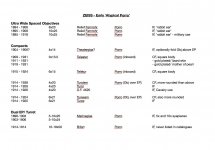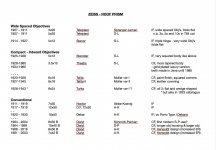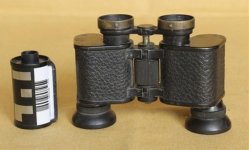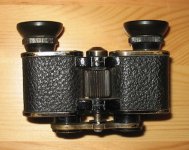Just found this tucked away in a drawer.
Possibly 6x15 Teletur, but markings are very faint. 1910 to 1924?
I think that someone has painted over the metal parts in black.
Objectives about 14mm aperture.
What surprised me is how good the image is.
Although uncoated there is one blue coated surface in the right barrel and one pale yellow in the left barrel.
This may be natural blooming or from the small amount of internal haze.
Close focus about 9ft for me.
It is dull now but will try it further.
Centre focus. brass? plates. Black leather covered body.
Although the right dioptre seems jammed, the eyepiece unscrews with a fine thread and I get good adjustment like that.
I may have the details wrong as the markings are so faint.
I may actually use this.
Regards,
B.
Possibly 6x15 Teletur, but markings are very faint. 1910 to 1924?
I think that someone has painted over the metal parts in black.
Objectives about 14mm aperture.
What surprised me is how good the image is.
Although uncoated there is one blue coated surface in the right barrel and one pale yellow in the left barrel.
This may be natural blooming or from the small amount of internal haze.
Close focus about 9ft for me.
It is dull now but will try it further.
Centre focus. brass? plates. Black leather covered body.
Although the right dioptre seems jammed, the eyepiece unscrews with a fine thread and I get good adjustment like that.
I may have the details wrong as the markings are so faint.
I may actually use this.
Regards,
B.








